Ume_Group1
Santorini House in Greece

Members: Kwon, YoungWoo (Thor) / Park, JaeYoon (Sonny) / Ban, KiTae (Joshua) / Kim, HyunSeo (Grace) / Park, GaYun (Elly) / Shin, HaGyeong (Emma)
Do you know about the beautiful houses of Santorini? Santorini is a famous tourist destination. Santorini is not the sleepy, boring countryside, but a lively island with various villages and cafes.
The climate in Santorini is very warm. The average temperature in winter is 12 degrees Celsius. Due to the island’s sweltering summers and scorching sun, homes in Santorini require that the climate be kept in mind when building them. One efficient way to keep houses cool was to whitewash them. White’s reflective qualities assist in rerouting the strong sunshine, so that the house won’t absorb too much heat.
Most of the houses in Santorini are made out of limestone and dust. They are packed tightly in groups. They are often carved into the island’s volcanic rock formations, creating unique cave-like dwellings.
In the second half of the 18th century, the houses became more luxurious with high-end interiors and furnishings. Today, Santorini’s houses are popular with tourists, who are looking for an authentic Greek experience when visiting.
Ume_Group2
Igloo, the most amazing house in the world
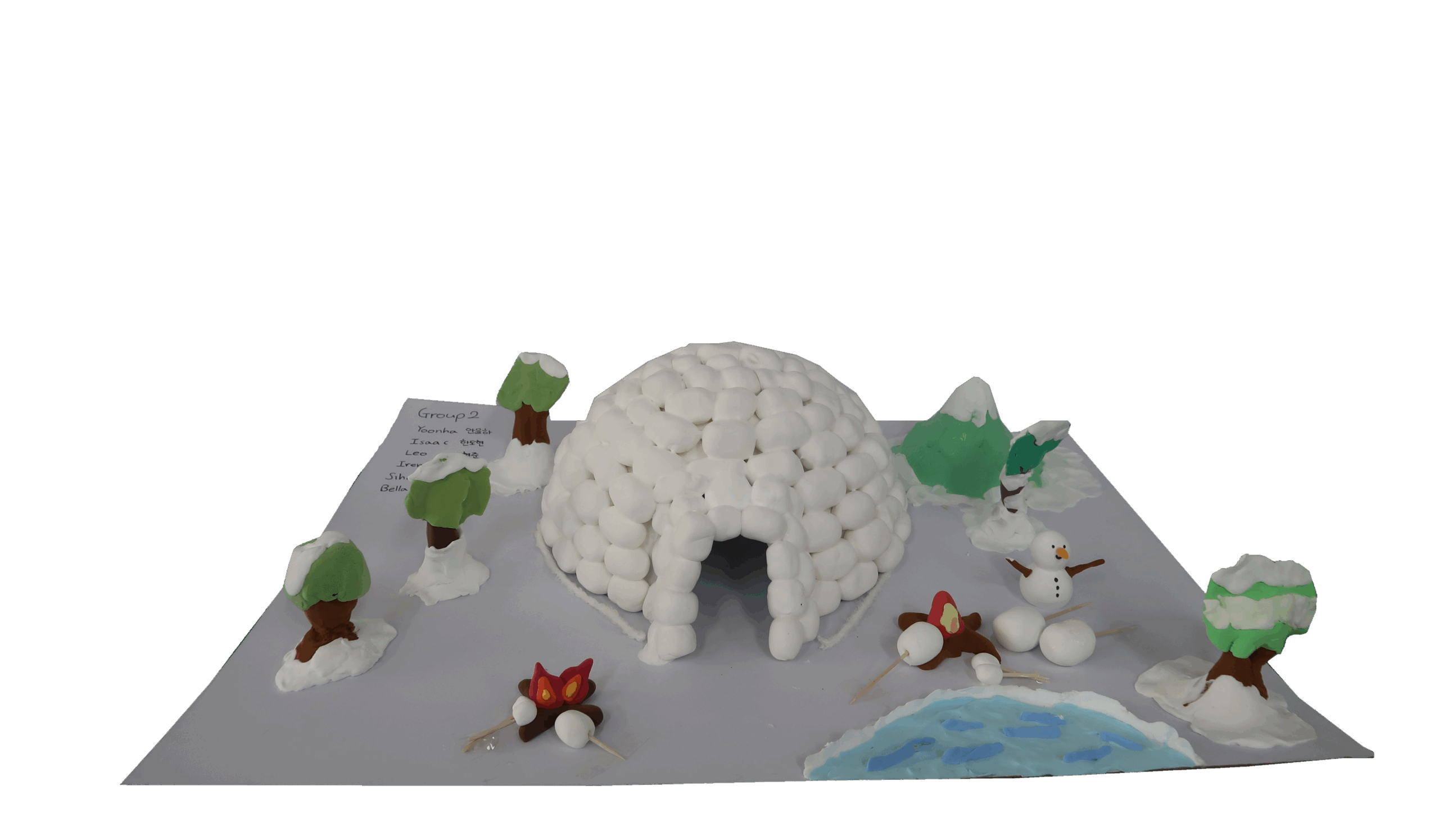
Members: Shin, HyunJoon (Leo) / Choi, SiHoo (Sihoo) / Han, DoHyun (Isaac) / Park, YeEun (Irene) / Ahn, YoonHa (Yoonha) / Lee, Lime (Bella)
Igloos are found in Canada, Alaska, Greenland, and Siberia. They are built in extremely cold climates, where temperatures can drop to minus 40 degrees Celsius. Snow is common in these regions, and some areas also experience permafrost. Igloos are typically made from blocks of compressed snow.
Flat terrain is ideal for constructing igloos. The most important factor when building an igloo is the materials used: the snow must be firm enough to be stacked in blocks. Small igloos measure about 6 to 8 feet wide, medium ones range from 8 to 12 feet, and large igloos can be up to 15 to 20 feet in diameter.
Building an igloo involves three main steps. First, blocks of snow are cut and shaped. Next, these blocks are arranged in a dome shape. Finally, an entrance tunnel is carved out. Igloos have been used for centuries and have evolved in design and purpose over time. Despite being made of snow, they offer excellent insulation, keeping the inside surprisingly warm.
Igloos demonstrate how people adapt to extreme climates and harsh weather conditions. Their strength, design, and ability to stay standing are very impressive.
Ume_Group3
Stilt House on Water
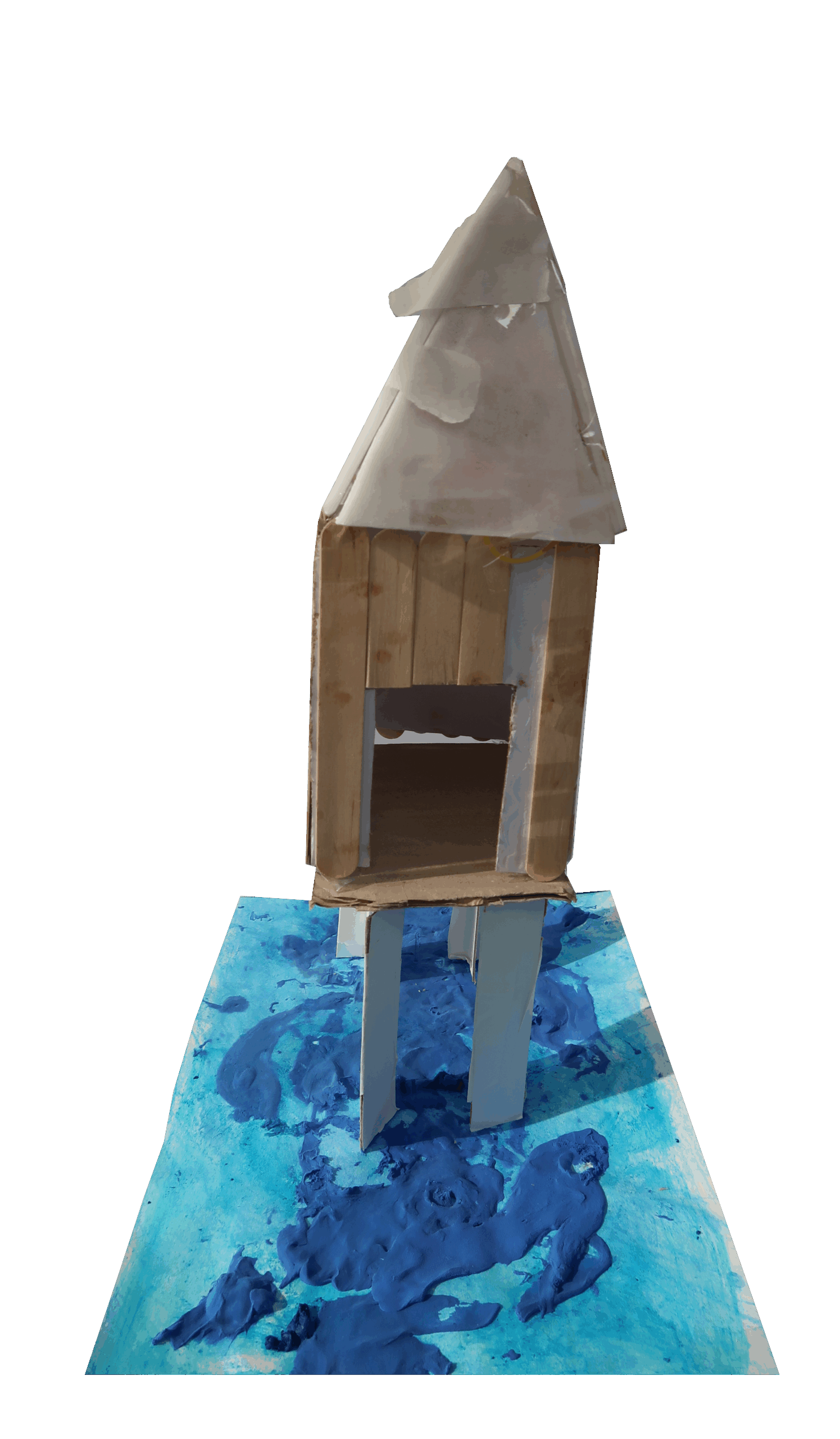
Members: Kim, DoJun (Jun) / Lee, JunSeo (Tom) / Choi, JunWoo (Jaden) / Namgung, SuYeon (Joy) / Lee, JuA (Jua) / Cho, YoonHyeong (Rose)
There are a lot of different types of houses and architecture around the world, and one of the most unique of these is the stilt house.
Stilt houses are built on long poles or posts called stilts, which raise the house above the ground or water. They are primarily constructed to protect against flooding. Hence, these houses are commonly found in regions with heavy rainfall or vast wetlands. Examples include parts of South Asia, South America, and Africa. The shaded space beneath the house can also be used for storage or other practical purposes.
Stilt houses are typically made using materials like wood, bamboo, or concrete, which are driven deep into the ground, mud, or riverbed to provide stability. Lightweight materials such as wooden planks, bamboo, or palm leaves are often used to build the upper structure on top of the stilts.
Stilt houses are an excellent example of how humans adapt creatively to varying environments and climates. They show the diverse ways people stay safe and dry in wet conditions. By using local, natural materials like bamboo, wood, and palm leaves, these homes are also environmentally friendly.
Ume_Group4
Log House in Finland
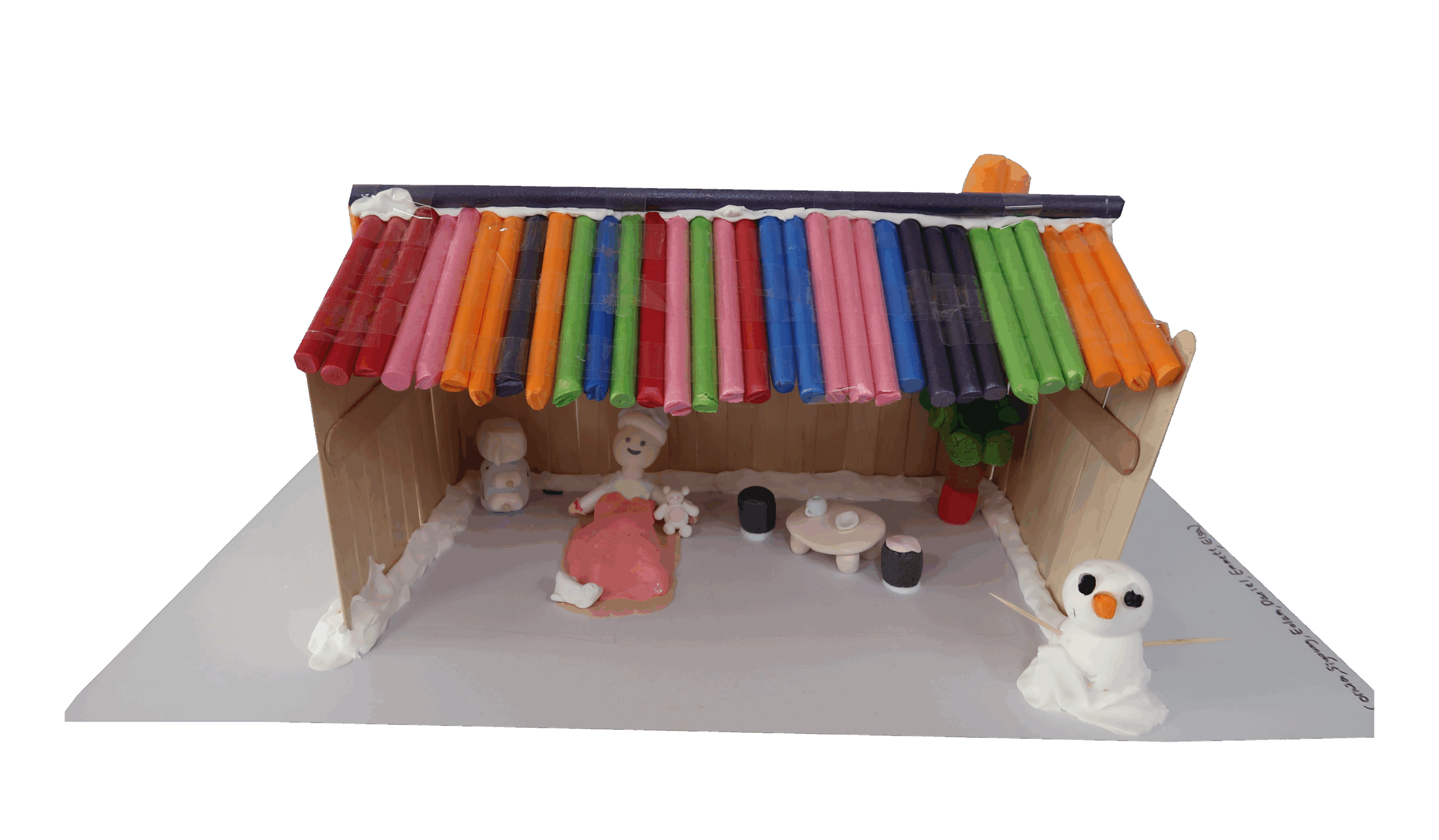
Members: Kim, JooYoung (Daniel) / Lee, YuJun (Emmett) / Kim, EoLam (Lam) / Park, SiYoung (Siyoung) / Park, JiAn (Elsa) / Hong, JiHo (Olivia)
The Finnish log house is a structure made from wood, offering excellent insulation against harsh Arctic conditions. These houses are typically built in forested regions where high-quality timber is abundant and are common in areas that experience heavy snowfall. Wood resists moisture damage from snow and remains resilient even in the coldest temperatures.
Log houses vary greatly in size. Smaller ones range from 8 to 12 feet in length and 6 to 8 feet in width. Medium-sized houses are typically between 15 and 25 feet long, while larger structures can exceed 30 feet. Regardless of length, most log houses stand between 8 and 9.5 feet tall.
Log cabins originated in Scandinavia and Eastern Europe. Although the origin remains uncertain, it is believed that the first log structures were built in Northern Europe during the Bronze Age, around 3500 BC.
Over time, the use of log construction spread far beyond its early roots. Abraham Lincoln, the 16th President of the United States, was born in a log cabin in 1809. Today, log houses can be found across the globe.
Rose_Group1
Tipis and the Nomadic Life
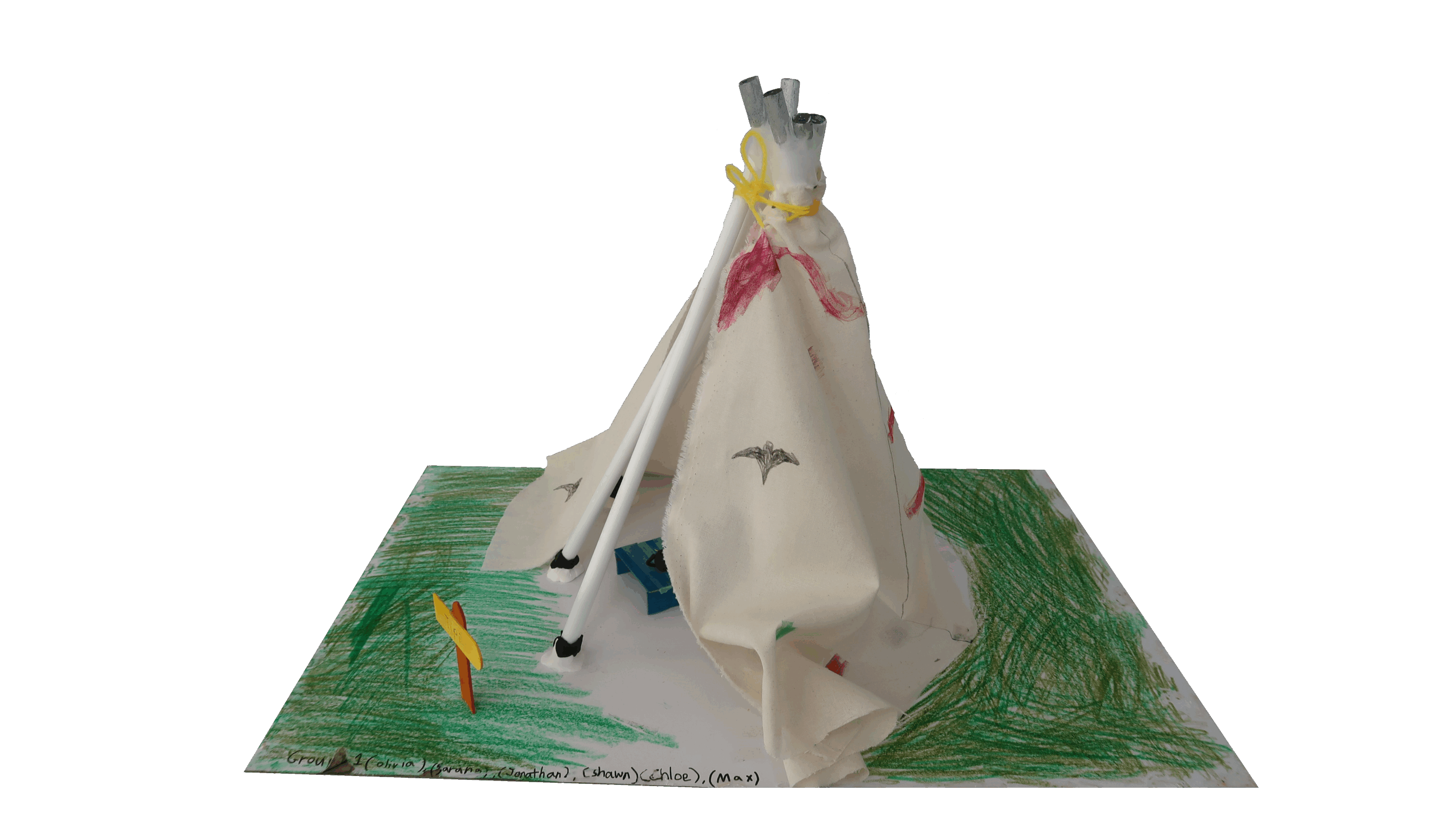
Members: Kyoung, JaeSeung (Jonathan) / Kim, SooHyun (Shawn) / Jeon, MinWoo (Max) /
Baek, SaRang (Sarang) / Yang, HyoJoo (Chloe) / Jung, AYoon (Olivia)
About 400 years ago, Native North American tribes used tipis. These portable homes, ideal for nomadic life, were constructed from simple materials yet were highly effective and well-suited to their environment.
Tipis were commonly found on the Great Plains and Canadian Prairies, where summers were warm and dry, and winters were cool. They remained stable in strong winds, and the interior temperature stayed comfortable year-round.
Native Americans made efficient use of available resources. Tipis were built with wooden poles, fabric or hides, ozans, liners, and lacing pins. Completed structures stood between 3.5 to 6 meters tall and 4.5 to 9 meters wide. They were often arranged in circular formations and designed for easy transport. Inside, furniture was rustic and usually carved from elm by skilled craftsmen.
Tipis remain a fascinating example of practical and adaptable design. They offer a valuable insight into how Native American tribes lived in harmony with the environment.
Rose_Group2
Rock House: Chimney for Fairies
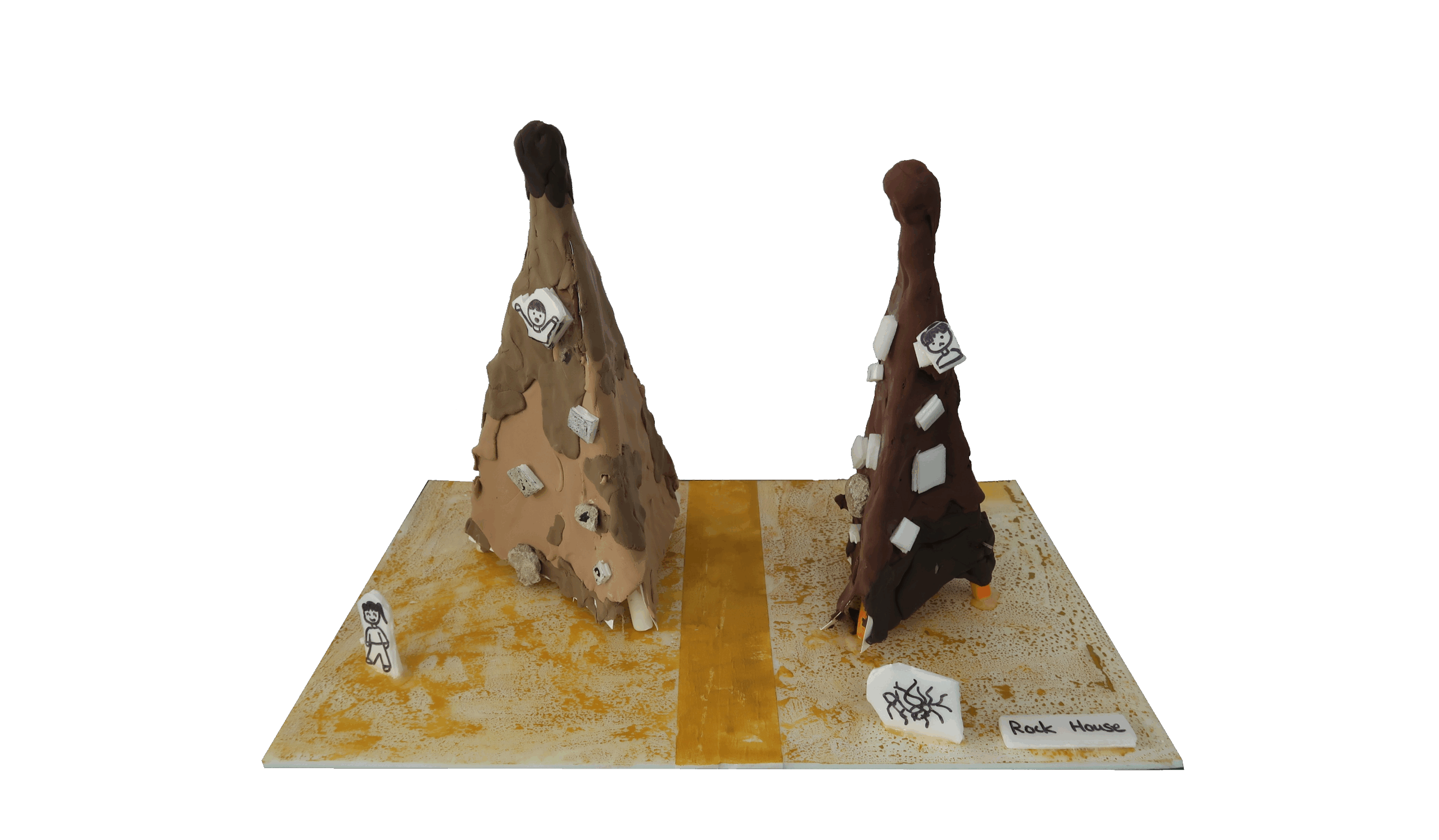
Members: Kim, SiWan (Sean) / Lee, HaJun (Hajun) / Kim, SeoYeon (Arabella) / Yoon, SooHyun (Olivia) / Lee, AhRin (Irene) / Cho, Yool (Ella)
Have you ever imagined living in a house shaped like an ant’s house? In Turkey, some people live in unique dwellings called “rock houses” or “fairy chimneys”!
These homes are carved directly into volcanic rock. This technique, known as rock-carved architecture, dates back centuries. Originally, the rock houses provided shelter and served as hideouts during times of war.
Located in Cappadocia, Turkey, the rock houses were constructed from tall, mushroom-shaped rocks left behind by volcanic eruptions. People discovered these rocks and carved out homes inside them. The rock houses offered excellent protection and the perfect hiding place.
Rock houses don’t just look amazing—they are also great for staying safe during emergencies. They are fun to look at and smart in design. They show how people used nature to build homes that could protect them in emergencies.
Rose_Group3
Crannogs: the Best Shelter in Ireland
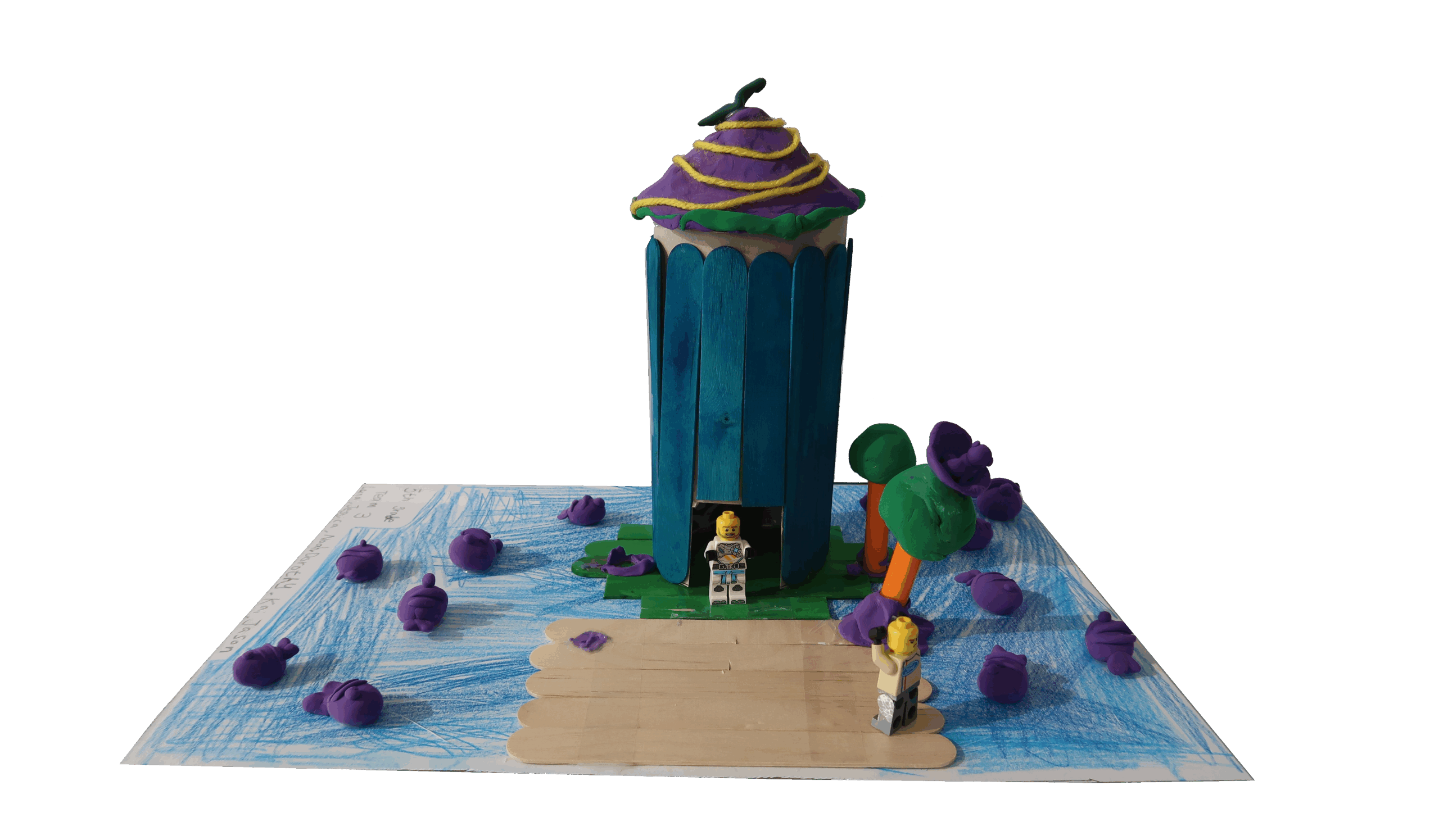
Members: Kim, JiSung (Jason) / Kim, HaJun (Noah) / Park, YeonWoo (Kai) / Kim, DoYeon (Dorothy) / Lee, JiHyun (Jessica) / Lim, ASo (Luna)
Have you ever been to Ireland? There are special houses there called Crannogs. These homes were built on water and were designed to suit Ireland’s cold and damp climate.
They were made from wood, straw, mud, and stone. Most of the furniture and items found inside Crannogs varnished wood to stop them from rotting. Crannogs were usually built in low places, close to lakes or rivers.
People lived in Crannogs from the Neolithic period all the way to the early 18th century. As tools and building techniques improved, Crannogs became more advanced. They looked like round houses, or even small farms!
Crannogs were mostly found grouped together in tiny villages on islands. They had bridges to connect the islands to the shore. People could defend themselves easily from invaders using the bridge.
Today, almost no one lives in Crannogs. Most Irish people live in concrete homes. Could you imagine living in a home like the Crannog?
Rose_Group4
Trulli Houses, a Corn Castle in Italy
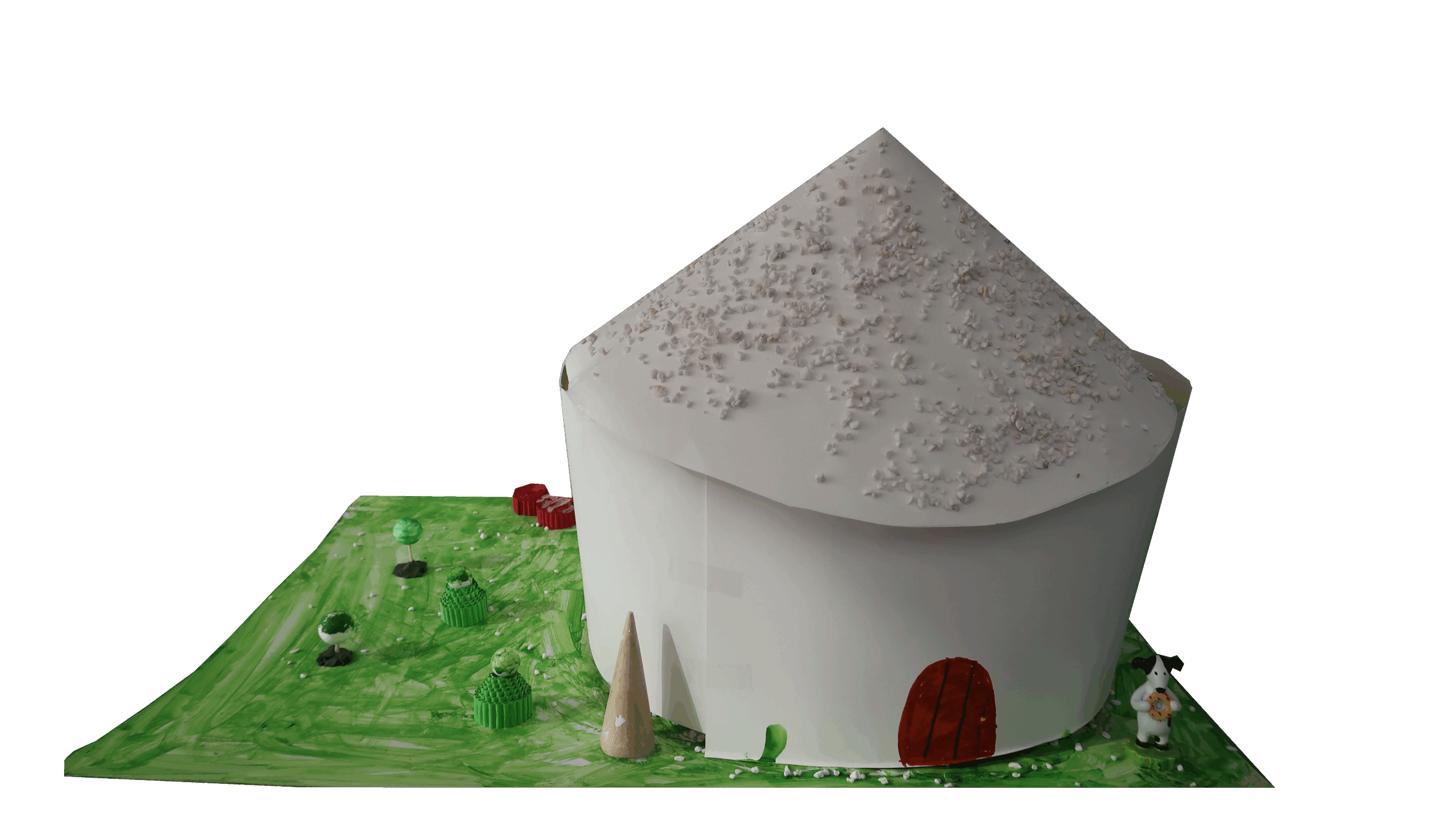
Members: Kim, YuJun (Daniel) / Park, JiHeum (Jiheum) / Park, JinWoo (Matthew) / Kim, LeAh (Leah) / Kim, YeonSeo (Yeonseo) / Son, Jiu (Victoria)
Have you ever been to Italy? In the countryside, you can find special homes called Trulli houses. These houses are white and shaped like cones, which makes them look a bit like corn. Trulli are built to suit Italy’s Mediterranean climate, with hot, dry summers and mild, wet winters.
Trulli houses are made from limestone. Builders pile stones on top of one another without using any mortar or cement. A long time ago, people built them this way to avoid paying house taxes, since they could remove the roof if needed! Most Trulli are about 1.6 to 2 meters wide and are often grouped close together on rolling hills.
People have lived in Trulli houses since the 14th century. Today, some are still homes, while others have been turned into fancy hotels or tourist attractions. Inside, you’ll usually find a bed, stove, table, and couch. The Trulli houses and their story are very interesting, and they are a great place to live!
Orchid_Group1
Mud Brick House: The Greatest House
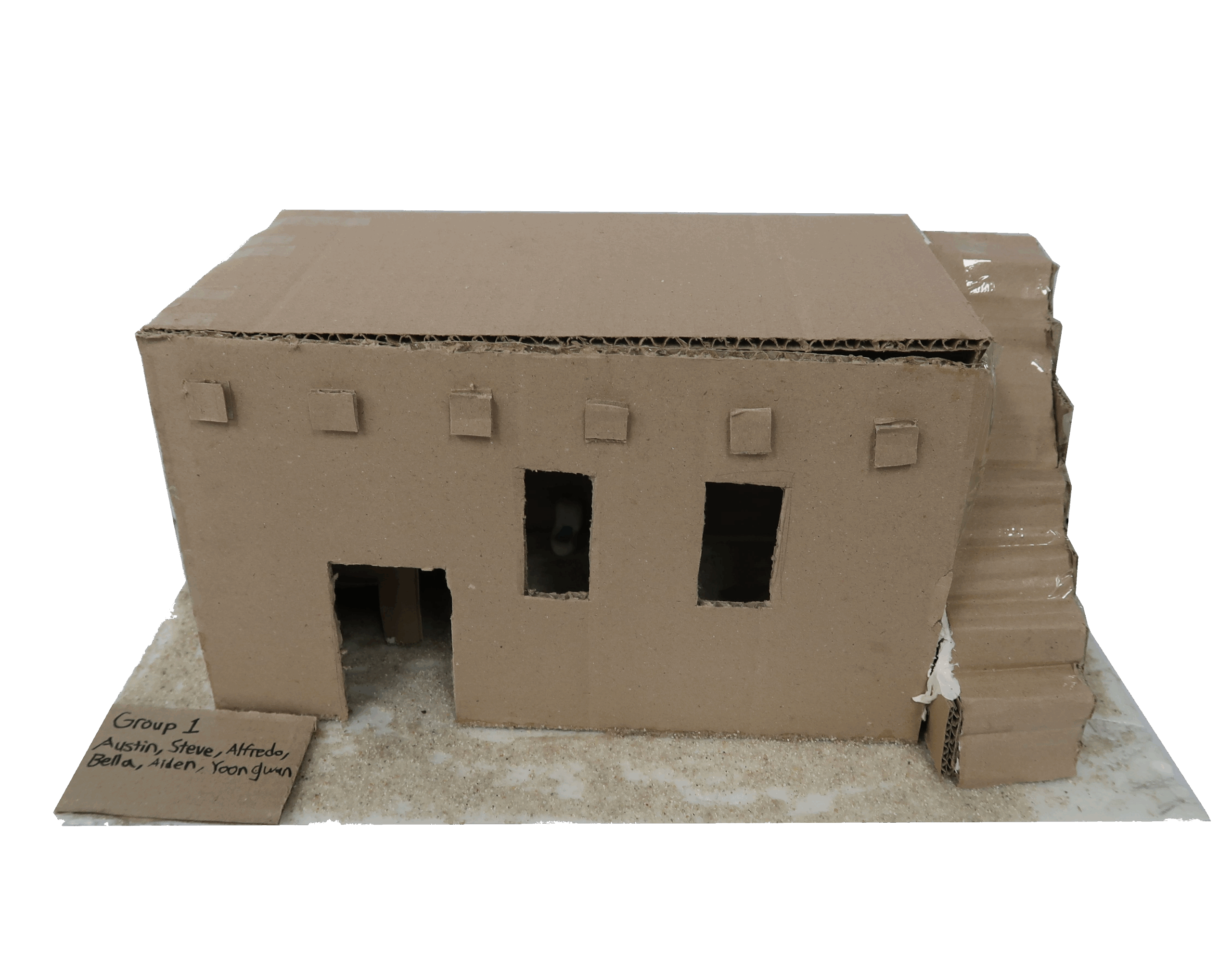
Members: Kim, TaeHoon (Austin) / Park, MinJoon (Aiden) / Shin, SeoJun (Alfredo) / Yang, SeungBin (Steve) / Choi, YoonGwan (Yoongwan) / Jung, HaeIn (Bella)
Can you imagine a house made out of mud? Most people will think there aren’t any mud houses, but there actually are!
First of all, this house’s name is the ‘Mud brick house,’ so people mostly used mud to build it. They made a mixture of mud with loam, clay, sand, and water. The bricks of mud can range from 300 to 375 mm long and as tall as 125mm. They can weigh up to 18 kg.
In addition, mud brick houses are not typically grouped in the same way as the other types of housing. They are often constructed as individual dwellings or as part of small clusters of homes, particularly in rural or traditional settings. The grouping and layout of mud brick houses often reflect the needs and traditions of the communities where they are built.
Lastly, people are known to have been living in mud brick houses since 9000 BCE. That sounds too old, but people thought it was very convenient to live in.
For these reasons, mud brick houses are great houses all over the world. What do you think?
Orchid_Group2
The Wonderful Treasure of India: Kettuvallams
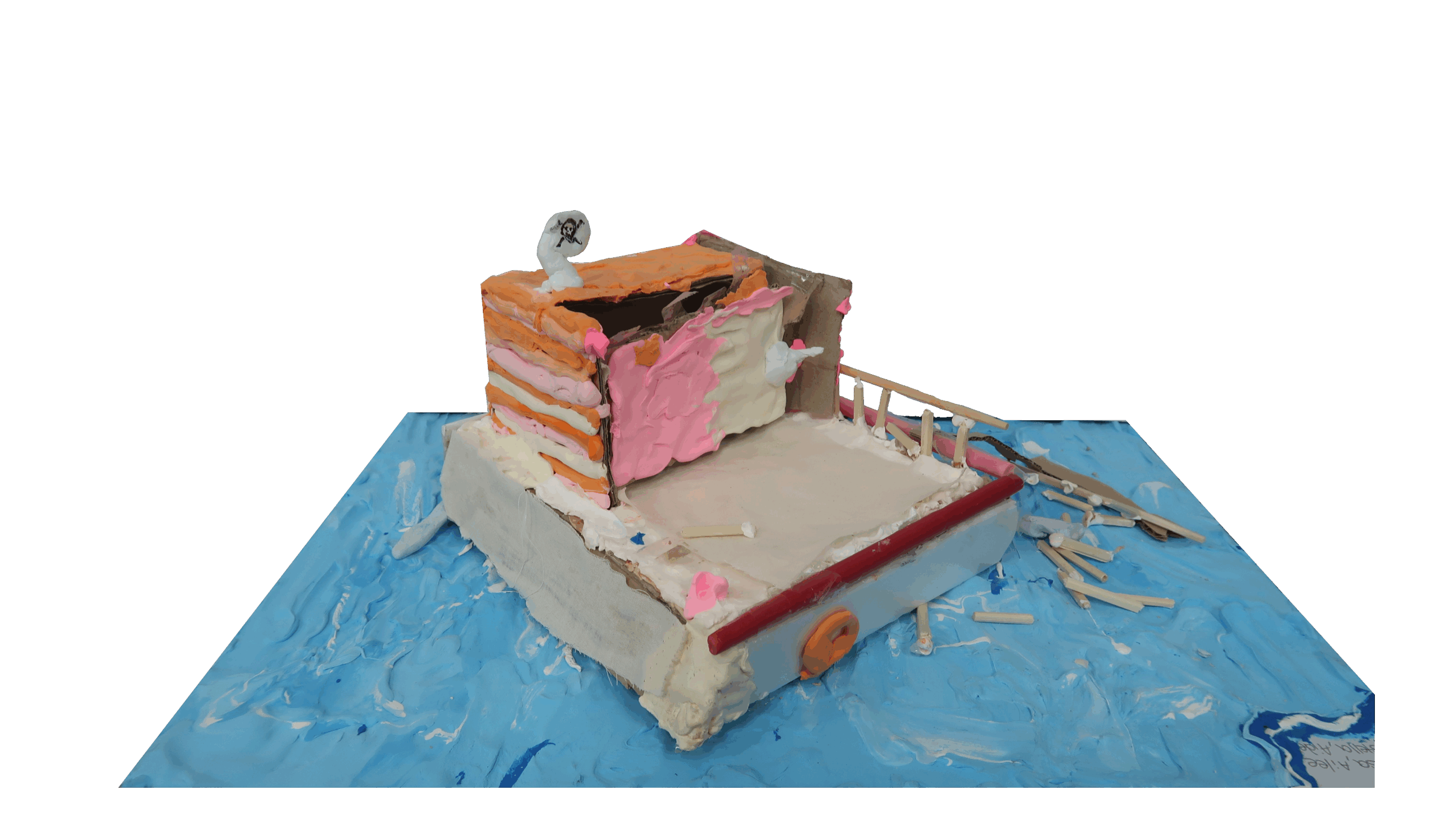
Members: Woo, YeongJae (Ryan) / Jeong, YuChan (Aiden) / Kwak, DaWn (Elsa) / Kim, MinJe (Ailee) / Kim, SeoWon (Stella) / Kim, IAn (Lilly)
Imagine you are floating on a wonderful boat house. Wouldn’t it be amazing? You can do this on an Indian houseboat, known as Kettuvallam, which is a large, slow-moving boat that was historically used for transporting goods. Today, they are popular tourist attractions
These houses are located in India. In India, the climate is tropical. Therefore, Kettuvallams were built using traditional methods, often without nails. Originally, Ketuvallams were houseboats, but these days, they have been transformed into a fun tourist attraction.
Do you wonder how this boat works? It works by hand! You use an oar to move the Kettuvallam. It’s hard work, right? Now, let’s talk about the features of the house. It is made out of wood, typically jackwood, along with bamboo, coconut fiber, and coir ropes. That is a lot of materials, isn’t it? The boat is 100 feet long, about 13 feet wide in the middle.
Orchid Group3
Relaxing Life in Thatched Cottage
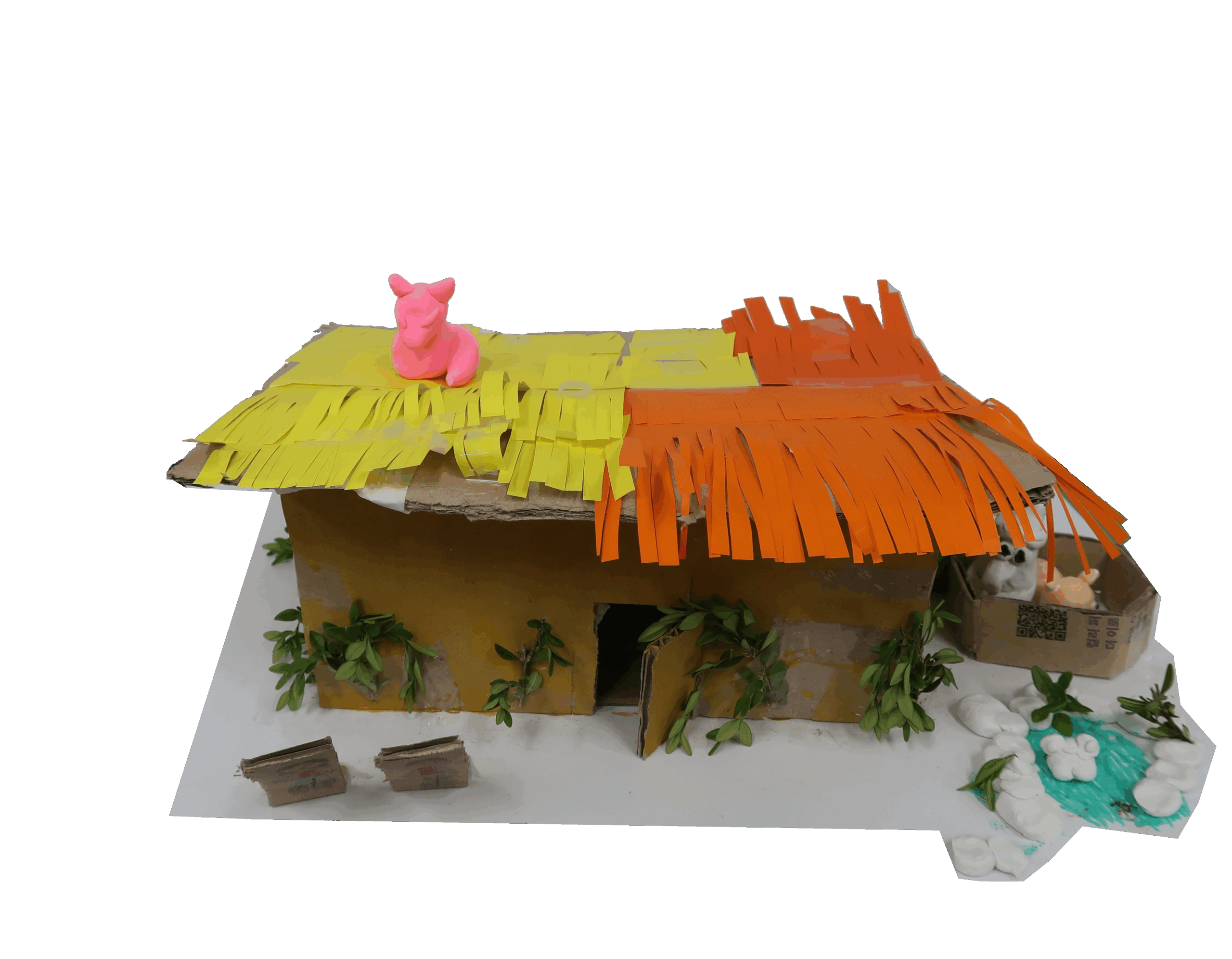
Members: Kang, JiSung (Daniel) / Son, BumGyu (Bumgyu) / Kang, YiHyun (Emma) / Uh, EunSue (Eunsue) / Lee, SaBeen (Bella) / Jeong, LiNa (Lina)
Have you ever heard about thatched cottages in Ireland? Thatched houses are common in Ireland.
First, they’re made out of dry fibrous plants. They’re smaller than modern houses. People used to use straw in the past to build them, but they use reeds now. Also, they have existed for about 500 years.
Second, the houses are not typically grouped. They’re usually located in quaint villages in rural areas such as valleys or mountainsides. It is because those areas have the necessary building materials, particularly straw and reed fur for roofing.
Third, the furniture inside the thatched houses includes chairs made out of wood, wooden tables, and storage solutions.
Do you think you could live in thatched houses? I would like to live there because I think living in nature would be more relaxing than living in loud cities. So I would prefer living in thatched houses.
Orchid Group4
Tipis: Simple but Amazing
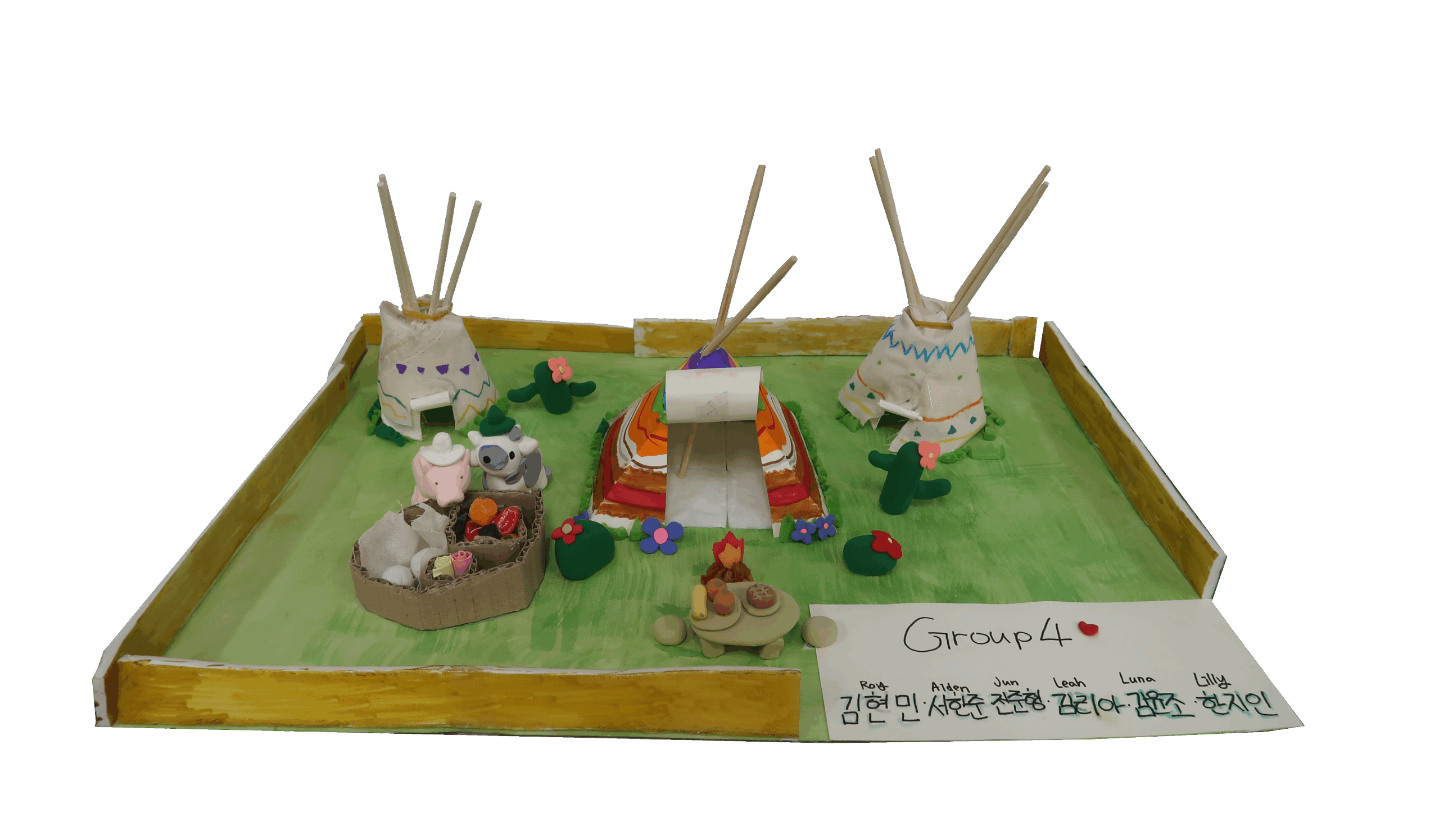
Members: Kim, HyunMin (Roy) / Seo, HanJoon (Aiden) / Chun, JunHyung (Jun) / Kim, LeAh (Leah) / Kim, YoonJoe (Luna) / Han, JeeIn (Lily)
A tipi is a kind of tent used by Native American people a long time ago. Tipis are mostly found in the Great Plains and Canadian Prairies of North America. A tipi is a shelter made from wooden poles and covers. The frame is constructed by tying together several poles in a conical shape, and then wrapping a cover around the poles. Tipis can range from about 8 feet to 22 feet in diameter.
Things commonly found in a tipi include buffalo hide mats and blankets for beds, fire pits for cooking and warmth, and various bags and sacks for storing belongings. People have been living in tipis for at least 5,000 years and possibly even longer. Tipis evolved over time, primarily influenced by the introduction of houses to the Great Plains and later, the advent of canvas.
Furthermore, the climate of mild winters and warm, humid summers influenced the tipi. In a tipi, one is exposed to the elements with wind, rain, and snow being felt directly.
In conclusion, tipis are amazing for their simple build and their history.
Peony_Group1
Thatched House: The Most Amazing House in Ireland
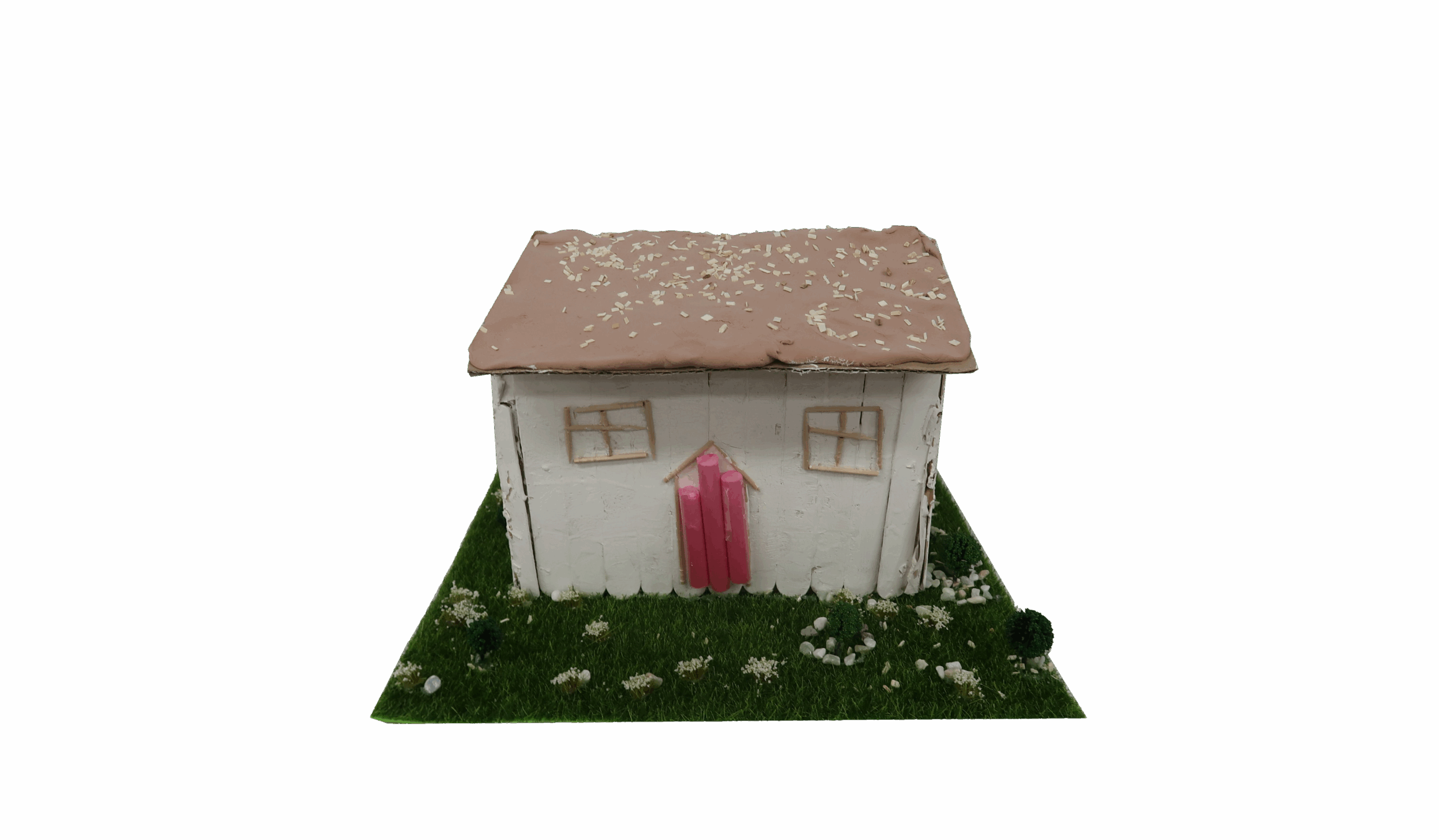
Members: Kim, SeJin (Sejin) / Han, SeungWook (William) / Kim, HaeSol (Mia) / Na, YeonWoo (Helen) / Yeo, SeoA (Sophia) / Cho, YuHyun (Sheryl)
Have you heard of thatched houses? Thatched houses are traditional houses found in Ireland.
Thatched houses are made using natural materials such as straw, reeds, and other vegetation. layered and bound together to create a waterproof, insulating roof. Thatched houses are located in rural areas in England and Ireland. They are often associated with historic architecture and the countryside. They are prevalent in areas with a history of agricultural practices that end up providing necessary materials for roofing. The floor area of traditional rural cottages is typically 600 to 1200 square feet. They are often made up of 2 to 3 bedrooms, a small kitchen, and a central living area. The height of these houses is usually one or one and a half stories.
Thatched houses offer advantages in both cold and warm climates. They provide natural insulation, which helps buildings stay cool in summer and warm in winter. However, climate and environmental factors can influence the longevity of the thatched roof, with warmer, more humid climates potentially shortening their lifespan due to increased moisture and decomposition.
In conclusion, we like and picked the thatched house because it has many advantages for people to survive in the harsh climate.
Peony_Group2
Stilt Houses: We Float on the Water!
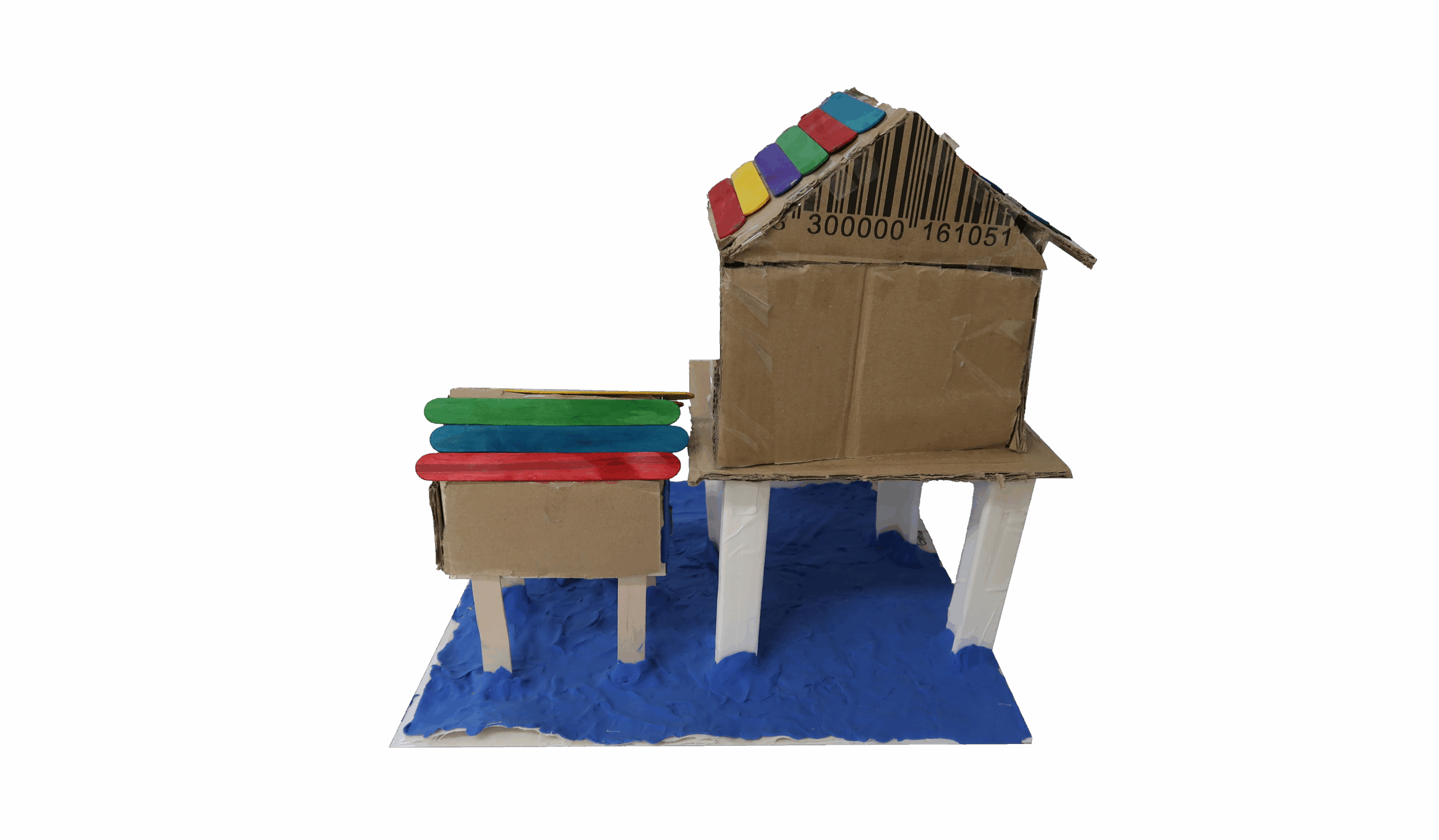
Members: Kim, DaU (Dau) / Kim, MinJun (David) / Kim, WooJun (Brian) / Park, YuJin (Chloe) / Sung, SeoYi (Jenna) / Lee, HyeWon (Joy)
Did you know that some houses are built over water? They are called stilt houses.
Stilt houses are found in hot and rainy places, such as Southeast Asia. In that region, people live on rivers and do everything on water. Many people cannot afford to buy land, so they build simple houses on boats or on poles over a river instead. People also build stilt houses to stay cool. Water keeps the house cooler because water does not change temperature easily. The house also stays safe from strong winds and rain. Stilt houses are a smart way to live.
Stilt houses are made of wood. There are 2 to 3 rooms in each house. These houses are made by erecting wooden posts and constructing a structure on top. They commonly have seating, storage, and tables in the house. People have been living in stilt houses for 6000 years.
Stilt houses are one of the most interesting houses in the world.
Peony_Group3
Adobe House: An Oasis in the Desert
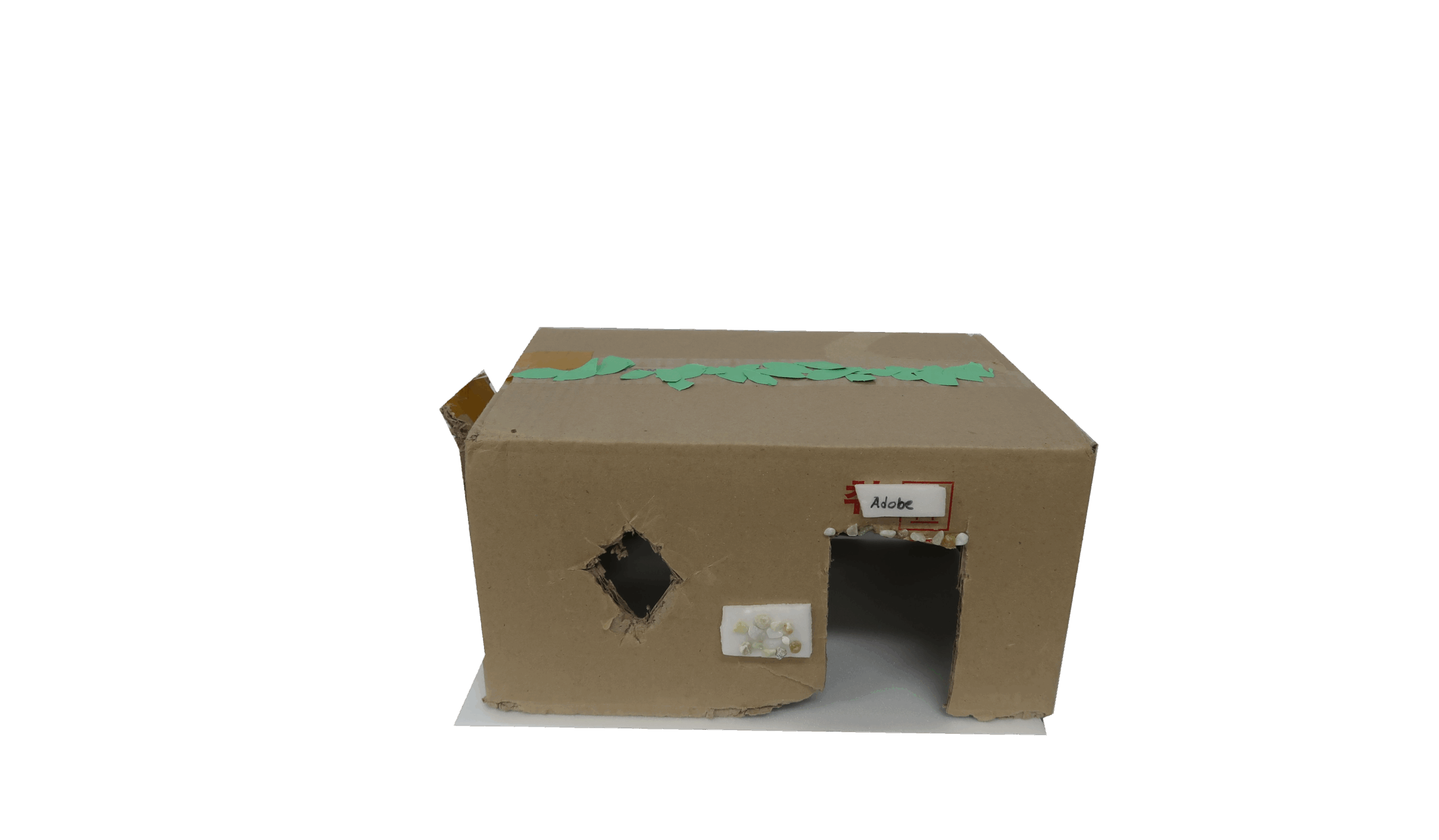
Memebers: Kim, JiHan (Kai) / Ahn, DoHa (Doha) / Han, JaeYoon (Mattia) / Hong, JuWan (Leon) / Go, JeongWon (Irene) / Ahn, SeHyun (Grace)
Imagine you’re in Mexico. It’s a very hot day, and you need to protect yourself from the unimaginable heat. Then you see an adobe house, a shelter and oasis in the desert!
First, adobe houses provide shelter from the heat. Adobe houses are located in both rural and urban areas. They are made out of adobe bricks, which are constructed from sand and clay. Sand is first compacted and then mixed with clay and water. The bricks are then dried in the sun. The houses are about 100 to 200 square meters.
Second, adobe houses effectively regulate temperature in hot, dry climates. They can be found in deserts. Adobe houses are built in the USA and Mexico. The Southwestern USA and Mexico are very hot and dry.
In conclusion, adobe houses are useful in hot and dry climates. They provide shelter from the heat. Do you agree with me that it is the best house to live in in the world?
Peony_Group4
Igloos: A Haven in the Arctic
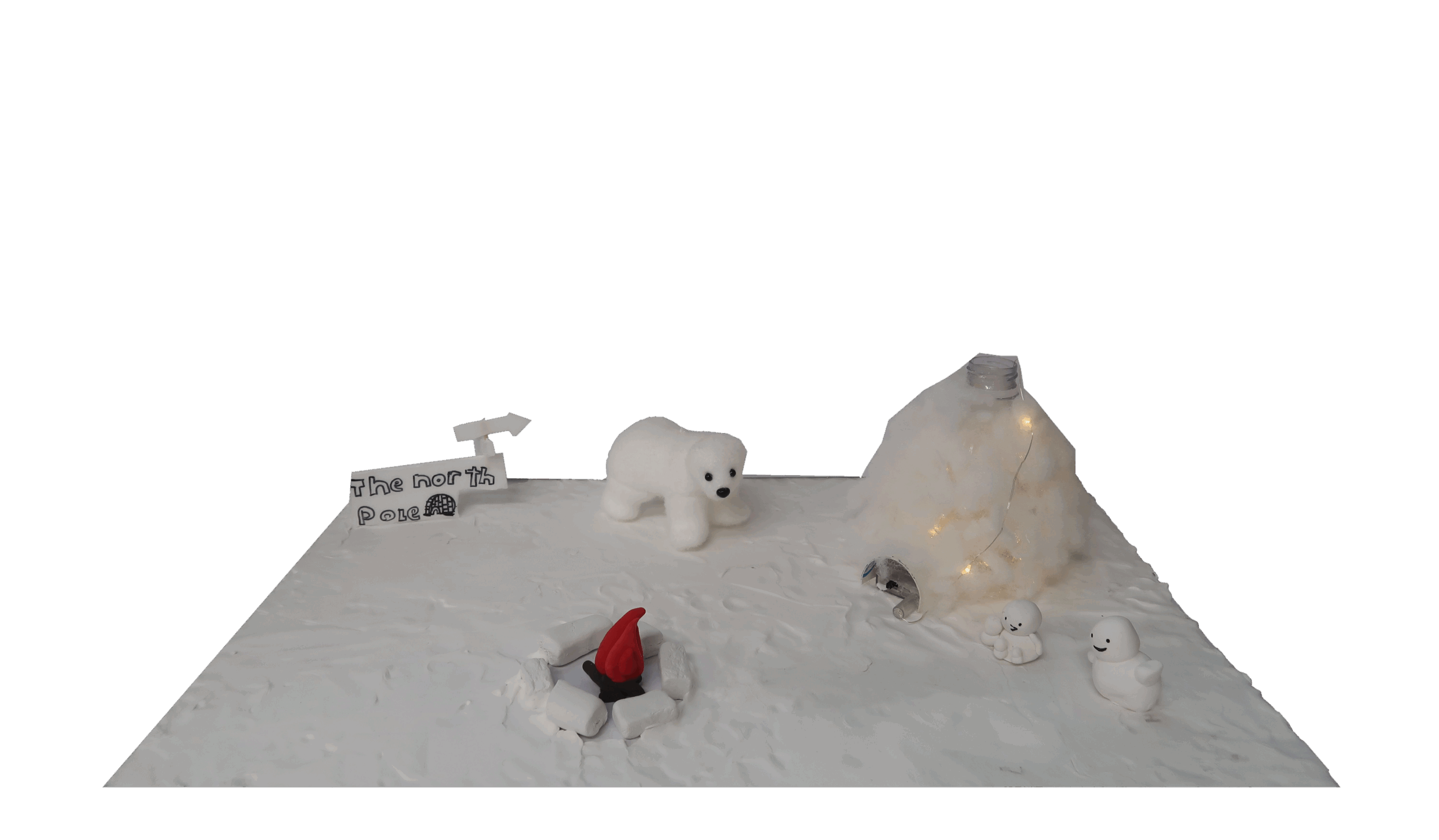
Memebers: Kang, JiWan (Justin) / Kim, SooHyun (Sean) / Lee, EunJun (Aiden) / Yoon, SeoI (Seoi) / Yoon, HaeIn (Irene) / Jung, HaYoon (Ella)
The igloo, a traditional house in the Arctic, is made of ice. Small igloos are clustered together, while big igloos are not. They are usually 3 to 3.5 meters, so they are big enough for humans to live inside. In order to make them, people cut snow blocks in a square shape and stack the blocks together. People have been living in igloos for thousands of years. Traditionally, igloos had beds made of loose snow, caribou furs, and animal skins. But nowadays, they have beds with wood grooves, toilets, and even shower booths.
Igloos are located in Arctic regions such as Canada, Greenland, and Siberia. They are designed to maximize their insulating properties and create a warm, wind-resistant shelter. They are remarkably well-adapted to the Arctic environment due to their efficient use of local resources and design. Igloos are usually found in rural areas where the surface is typically flat. They are not found on rocky or uneven terrain.
